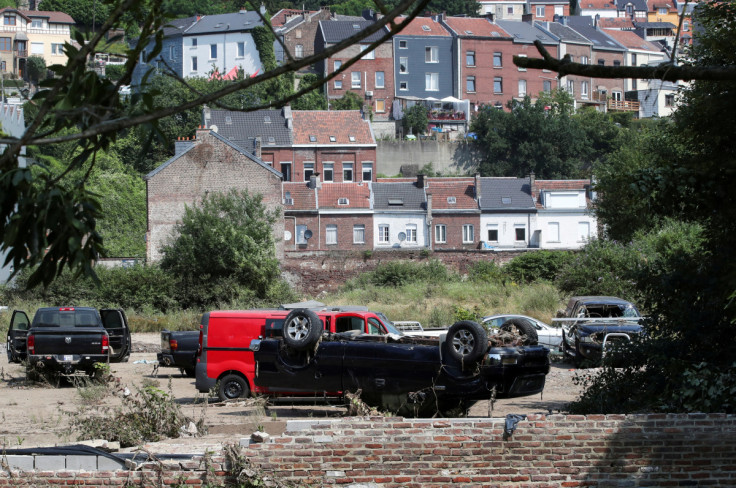A Year After Devastating Floods, Belgian Victims Still In Trauma

A year after floods devastated his town in the east of Belgium, 70-year-old retired welder Mario Bonelli remains traumatised by the event and fellow townsfolk are still repairing their ravaged homes.
The floods in eastern Belgium last July were the most destructive in living memory as streets turned into rivers, roads were ripped up and houses caved in, shocking a wealthy country that had, by and large, escaped the worst effects of climate change.
The floods caused more than 40 fatalities in Belgium alone. In neighbouring Germany, where flooding was followed by severe storms, around 170 people lost their lives.
The Belgian municipality of Trooz, with just over 8,000 inhabitants, was one of the hardest hit.
"We are still traumatised. When there are rainstorms, we are afraid of having water (rising) up to that level. There have been deaths, we found a body there three weeks ago," Bonelli said.
Former car mechanic Jose-Antonio Chacon-Ruiz, 62, said his insurer has yet to pay his claims even as his house repair costs have ballooned.
"Unfortunately for me, the company (in charge of repairs) has gone bankrupt. I paid over 70,000 euros and this is going nowhere," he said.
Trooz Mayor Fabien Beltran said his office was trying to help people recover from the trauma, and was employing two full-time psychologists.
"There are still many traces of last year's crisis," he said.
(Writing by Foo Yun Chee; Editing by Christina Fincher)
Copyright Thomson Reuters. All rights reserved.





